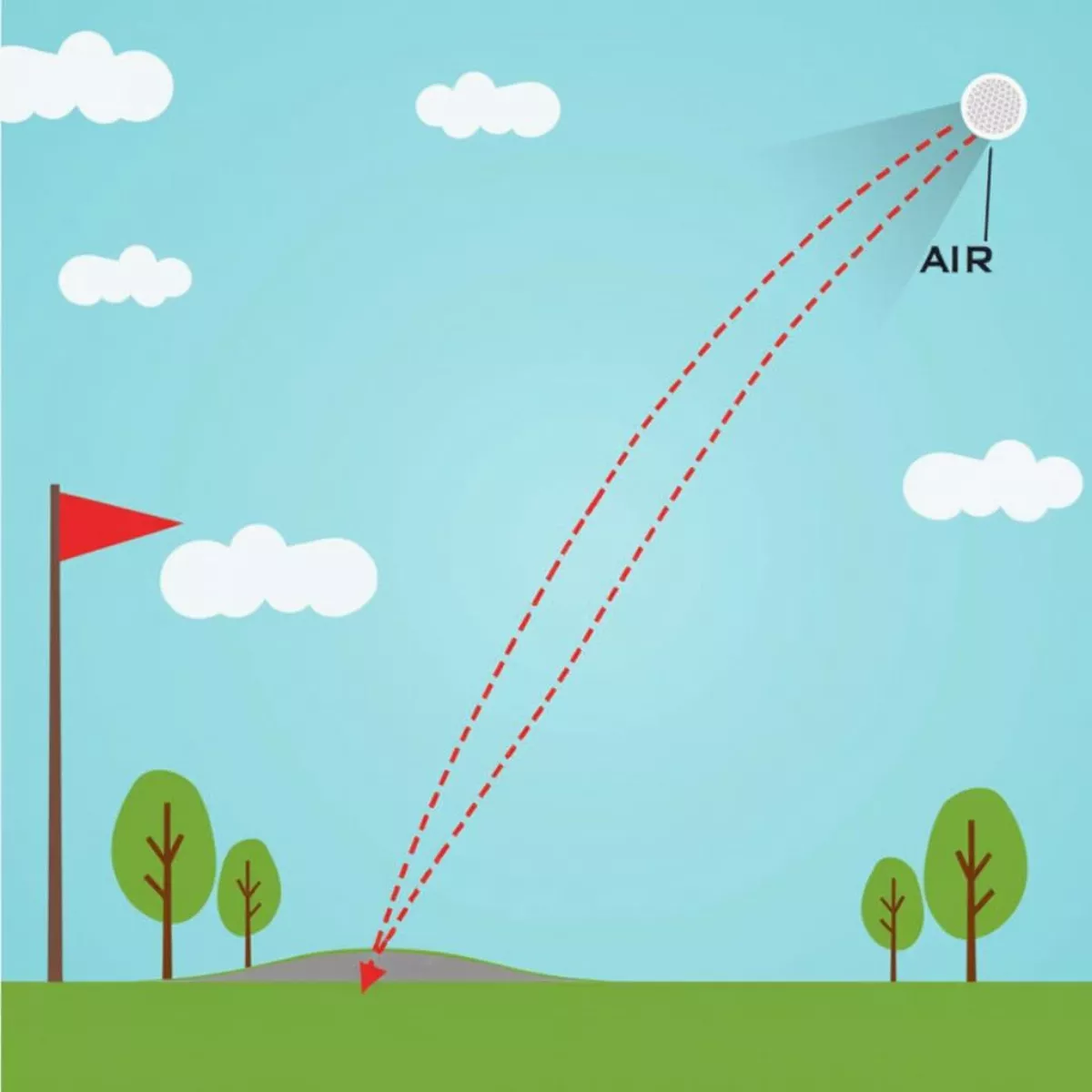Playing golf is more than just swinging a club and hitting a ball; it’s a game affected by numerous environmental factors. Humidity is one of the most significant yet often overlooked elements that can dramatically influence your game. If you’ve ever wondered why your drives go a little shorter or longer on certain days, humidity may be the culprit.
In this guide, we will delve into the science behind how humidity affects golf ball distance, offering insights you can use to improve your game. So grab your clubs—let’s tee off!
Understanding Humidity and Its Measurement
Before we explore its impact on golf ball distance, let’s clarify what humidity is. Humidity refers to the amount of water vapor present in the air. It is expressed as a percentage, known as relative humidity (RH). For instance, 100% RH means the air is completely saturated with moisture.
Types of Humidity:
- Absolute Humidity: The actual amount of water vapor in the air, regardless of temperature.
- Relative Humidity: The current humidity level compared to the maximum amount of moisture the air can hold at a given temperature.
Impact of Humidity on Air Density
One key factor in how humidity affects golf ball distance lies in air density. As humidity increases, air becomes less dense. Why does this matter?
- Less Dense Air: The more moisture in the air, the less compact the air molecules are. This allows the ball to fly further because it encounters less resistance on its way to the target.
- Dry Air: When the air is drier, it is denser, and air resistance increases, which can lead to shorter drives.
 Golf Ball Trajectory in Air
Golf Ball Trajectory in Air
How Humidity Influences Golf Ball Distance
A golfer’s ball travels through the air, and how far it goes largely depends on the interplay among several factors, including lift, drag, and ball speed. Let’s break it down:
1. Increased Distance in High Humidity
When humidity levels rise, it has the following effects:
- Enhanced Lift: The golf ball experiences greater lift due to the reduction in air density.
- Reduced Drag: The less compact nature of moist air produces less drag on the ball.
- Longer Flight: Because a lightweight ball can move through the less dense air more efficiently, you may see an increase in distance.
2. Reduced Distance in Low Humidity
Conversely, lower humidity levels lead to:
- Increased Air Density: The denser air results in increased drag on the ball.
- Lower Carry: The extra resistance can reduce how far the ball travels, leading to shorter drives.
Understanding How Temperature Plays a Role
While we’re focusing on humidity, it’s crucial to consider temperature as well. Warmer air holds more moisture, making the following conditions likely:
- Warm, Humid Conditions: Great for longer drives.
- Cold, Dry Conditions: Generally leads to shorter drives.
 Golf Course in Varied Weather
Golf Course in Varied Weather
Here’s a quick reference table for better understanding:
| Humidity Level | Temperature Range | Expected Impact on Distance |
|---|---|---|
| High (80% – 100%) | Warm (>70°F) | Increased Distance |
| Moderate (50% – 80%) | Mild (60°F – 70°F) | Moderate Distance |
| Low (<50%) | Cold (<60°F) | Decreased Distance |
Practical Tips for Golfing in Different Humidity Levels
Adapting Your Game
Knowing how humidity impacts your game can give you an edge. Here are some practical tips:
- Adjust Your Swing: On humid days, you may consider a faster swing speed to take advantage of the lighter air.
- Club Selection: Don’t hesitate to change clubs based on moisture levels. You might opt for a shorter club in drier conditions and a longer one when humidity is high.
- Stay Hydrated: This isn’t just for your body! When conditions are humid, make sure your clubs and ball are free from moisture.
Measuring Humidity on the Course
- Weather Apps: Utilize real-time weather applications that provide humidity levels, temperature, and wind details.
- On-Course Observations: Take note of how your ball flight varies under different weather conditions during practice rounds.
 Golfer Using Weather App
Golfer Using Weather App
Key Takeaways
- Humidity affects golf ball distance due to changes in air density.
- Moist air lessens drag on the ball, allowing it to travel further.
- Temperature further modifies the impact of humidity on distance.
- Adjust your swing and club choices based on the humidity level.
- Stay informed with weather apps to plan your rounds effectively.
Frequently Asked Questions
1. How much does humidity actually affect my golf ball distance?
Humidity can cause a difference of 10-20 yards in distance, depending on how high or low the humidity is.
2. Does humidity affect my golf swing?
Yes, the feel of your swing can change based on humidity. More moisture could lead to slightly slower club head speeds and altered ball feel.
3. What other factors influence golf ball distance?
Along with humidity, factors like wind speed, temperature, altitude, and ball composition all play a role.
4. How can I adapt to varying humidity levels?
Monitor the weather before heading out, adjust your club choice, and consider changing your swing style based on humidity levels.
5. Is it better to play on a humid or dry day?
This depends on personal preference and adaptability. Many golfers find humid days more forgiving for yardage, while others prefer the predictable ball flight on dry days.
6. Can wind affect humidity’s influence on distance?
Absolutely! Wind can either compound or negate humidity’s effects. A headwind on a humid day might lessen distance gains, while a tailwind can amplify them.
7. Is there a perfect humidity level for golfing?
Moderate humidity levels (around 60% to 70%) often provide a balance of distance without too many complications with the ball’s flight.
8. Are there benefits to playing in different seasons due to humidity?
Yes! Each season presents distinct humidity levels and temperatures, allowing players to adapt their strategies and enjoy varied conditions.
9. Should I practice differently in varying humidity conditions?
Yes, practicing in both humid and dry conditions can prepare you for all scenarios, helping you learn how to adjust your game.
10. Does the type of golf ball I use matter?
Yes, different golf balls have varying performances under humid conditions. Some may retain more spin in moist air, while others may travel further.
By understanding how humidity and other environmental factors influence golf ball distance, you can optimize your performance on the course. Embrace these insights to enhance your game and impress your fellow golf enthusiasts!
For more tips on improving your game, check out our articles on golf swing mechanics and equipment selection.
Happy golfing!
